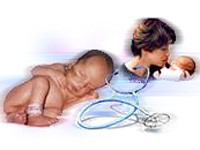Applied Reproductive Anatomy and Physiology - SWCH9017
Faculty: Faculty of Medicine
School: School of Women's and Children's Health
Course Outline: http://wch.med.unsw.edu.au/postgraduate-obstetrics-gynaecology
Campus: Sydney
Career: Postgraduate
Units of Credit: 6
EFTSL: 0.12500 (more info)
Indicative Contact Hours per Week: 0
Enrolment Requirements:
Women's Health Medicine program only (7014 & 9014)
Excluded: SWCH9001
CSS Contribution Charge: 3 (more info)
Tuition Fee: See Tuition Fee Schedule
Further Information: See Class Timetable
View course information for previous years.
Description
The course will cover 6 topics:
- Signals and Targets-hormones, receptors and end-organs
- The Menstrual Cycle
- Fertility, pregnancy and sexual differentiation
- Puberty and Reproductive ageing
- The male reproductive organs and spermatogenesis
- Sexual Function and Dysfunction
Course Aims
reproductive system of both males and females. The focus of this course is on the
practical application of reproductive anatomy and physiology to clinical situations
using examples and case studies commonly encountered in practice.
Learning Outcomes
- Identify and explain both normal and pathological processes of the male and female reproductive system
- Describe the interrelationships between various hormonal systems ( both male and female) and their effect on reproduction
- Apply their knowledge and understanding of the anatomy and physiology of both male and female reproductive organs to situations likely to be encountered in clinical practice
- Identify the challenges facing those working in the field of reproductive health in the 21st century and develop strategies to meet those challenges
- Translate the more complex issues encountered in reproductive health into terms more easily understood by patients, their partners and carers
Prescribed Rescources










